Contact Us
Hall of Science , Room T19 on a map
Biology 4400 Massachusetts Avenue NW Washington, DC 20016-8007 United StatesBiology Faculty Research Interests
The Department of Biology at AU offers expertise in a wide range of areas including cell and developmental biology, ecology, evolution, and genetics, and marine biology. If you are interested in doing postgraduate research with a faculty member, please contact them directly to discuss research interests.
- John Bracht
- Anny Cárdenas
- David Carlini
- Victoria Connaughton
- Kathleen DeCicco-Skinner
- Daniel Fong
- Rebecca Hazen
- Taisuke Izumi
- Naden Krogan
- Catherine Schaeff
- Christopher Tudge
Please see also Selected Faculty Publications below.

John Bracht
The research in the Bracht laboratory focuses on how genomes change. Genomic change can take many forms, from epigenetic modifications (changing genomic function) to genome rearrangements (changing the genomic structure) to evolutionary change (changing the genomic sequence). There are two main projects ongoing in in the lab: analyzing a subterrestrial nematode from South Africa (Halicephalobus mephisto) and investigating a germline-limited chromosome in zebra finches (Taeniopygia guttata). Both these projects highlight different aspects of genomic change but in different ways. H. mephisto shows how evolution adapts a genome to a stressful environment, giving insight into biological resilience. T. guttata exhibit an extra chromosome in the germline cells (the cells responsible for reproduction) which is selectively removed from somatic (non-reproductive) cells, raising fascinating questions about programmed genome restructuring within an organism.
See also: Brachtlab on Instagram, run by students, and BrachtLab on Tw/X.
Anny Cárdenas
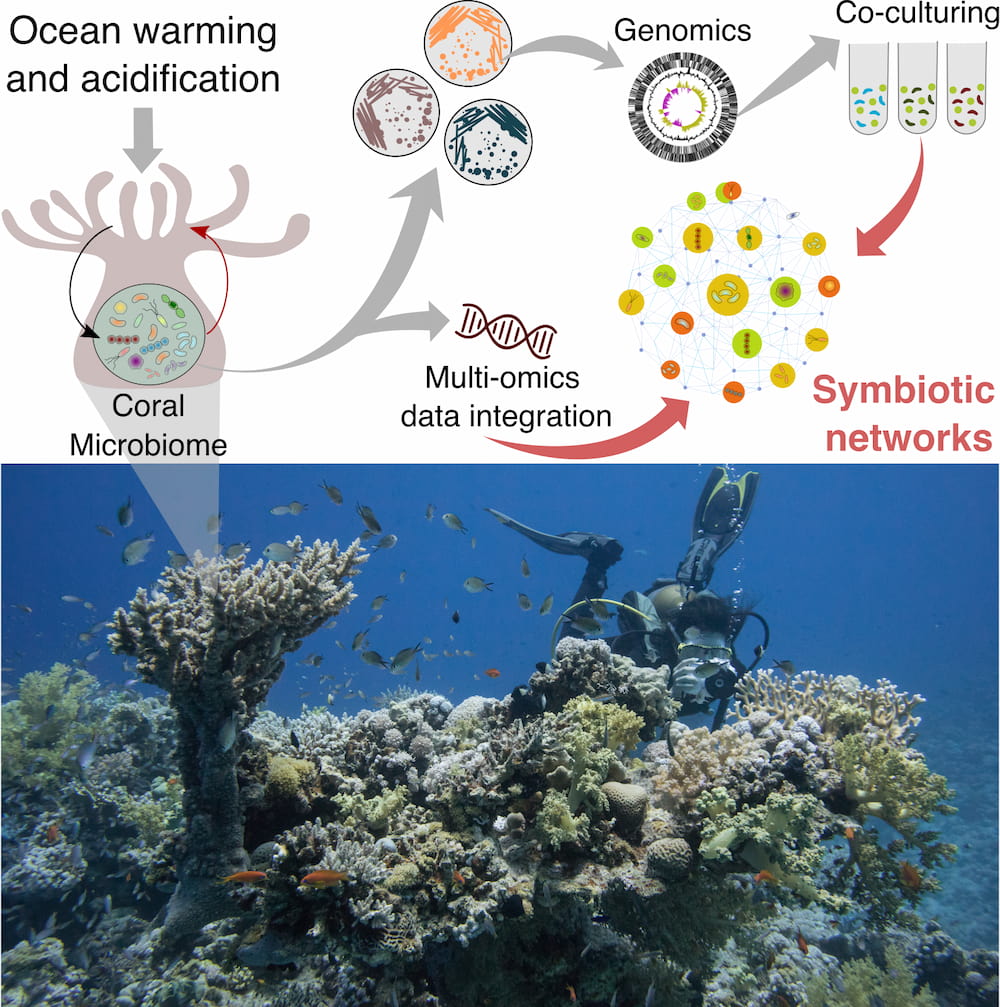
Dr. Cárdenas is a microbial ecologist interested in microbiome research. Her research has focused on understanding the diversity and function of microbial communities associated with corals and other marine invertebrates. The goal of her lab is to better understand the complex relationships between microbes and their hosts using a blend of classical culturing techniques and multiomics data (metagenomics, metatranscriptomics, and metabolomics).
Current research areas:
- Microbiome-mediated mechanisms that support adaptation to environmental change: Microbiomes (i.e., host-associated microbes) can have a wide range of effects on the host's phenotype. For example, microbiomes respond to new environmental conditions by rearranging their composition. These microbial compositional changes can benefit the host by acting as a source of phenotypic plasticity, allowing the host to rapidly respond to new environmental challenges. Dr. Cárdenas’s lab investigates the microbiomes of aquatic hosts in the context of changing environmental conditions to identify microbial strategies that support host environmental adaptation.
- Interactions between the algal symbiont (Symbiodiniaceae) and prokaryotic communities of the coral holobiont: Members of the Symbiodiniaceae family are intracellular algal symbionts of a variety of marine invertebrates, but they are best known for their symbiosis with corals. Symbiodiniaceae are greatly responsible for the evolutionary success of coral reefs in oligotrophic tropical waters as they supply most of the carbon and energy required to meet the coral’s nutritional and energetic demands. Some fundamental aspects of Symbiodiniaceae biology remain unknown, particularly, how Symbiodiniaceae interact with bacteria in their proximity. Dr. Cárdenas’s lab investigates the interactions between bacteria and Symbiodiniaceae and their potential role in coral adaptation to ocean warming.
- Antagonistic interactions mediated by vibrios and other aquatic pathogens: Emerging marine diseases are becoming more prevalent and severe worldwide as environmental and anthropological pressures on marine habitats increase. These diseases are caused by changes in the composition and function of the microbiome rather than by classical disease models (i.e., microbiome dysbiosis). When compared to plant and human microbiomes, aquatic microbiome dysbiosis is in its infancy, and the origin and progression of these diseases are largely unknown. Dr. Cárdenas's lab studies antagonist host-bacterial interactions that may mediate disease progression in coral and other marine organisms, as well as the role of environmental parameters in disease onset.

David Carlini
I am interested in molecular evolution and empirical population genetics. Current projects in my lab include: 1) transcriptome profiling of cave and surface populations of freshwater crustaceans, with an aim toward identifying and characterizing patterns of variation in differentially regulated genes, 2) use of next-generation sequencing to evaluate the species status of Lirceus usdagalun, a cave-dwelling freshwater isopod on the US endangered species list, and 3) experimental alteration of synonymous codons in bacterial antibiotic resistance genes.
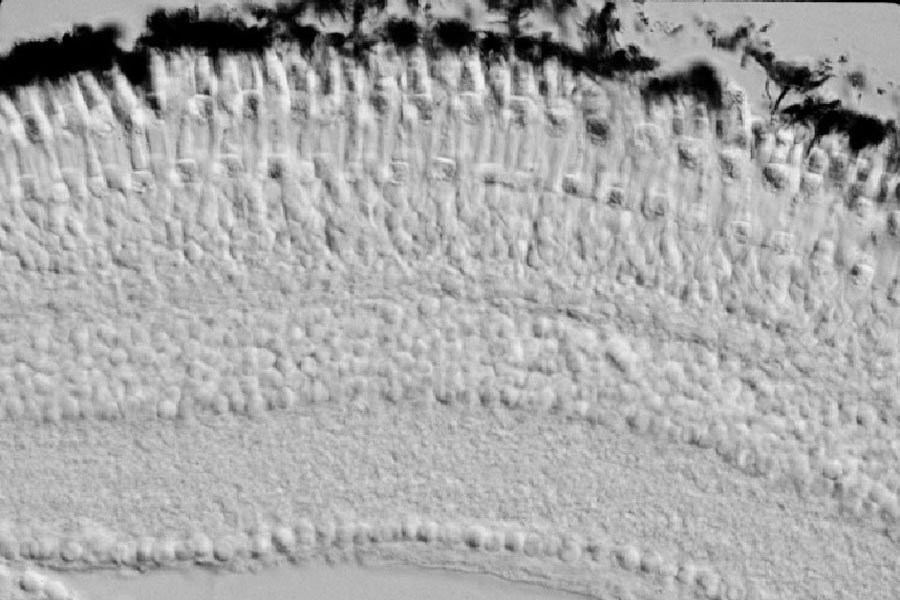
Victoria Connaughton
Dr. Connaughton's research interests encompass the disciplines of developmental biology (nervous system development) and neurobiology. Specifically, she is interested in examining the relation between visually-guided behaviors in larval teleosts and maturation of retinal neurons, circuits, and receptor mechanisms. She is also interested in examining how the development of neural connections could be altered due to mutations or drugs. She has performed experiments that address behavioral/ecological questions, as well as those that employ cell biology techniques to examine retinal circuitry in both developing and adult retinal tissue.
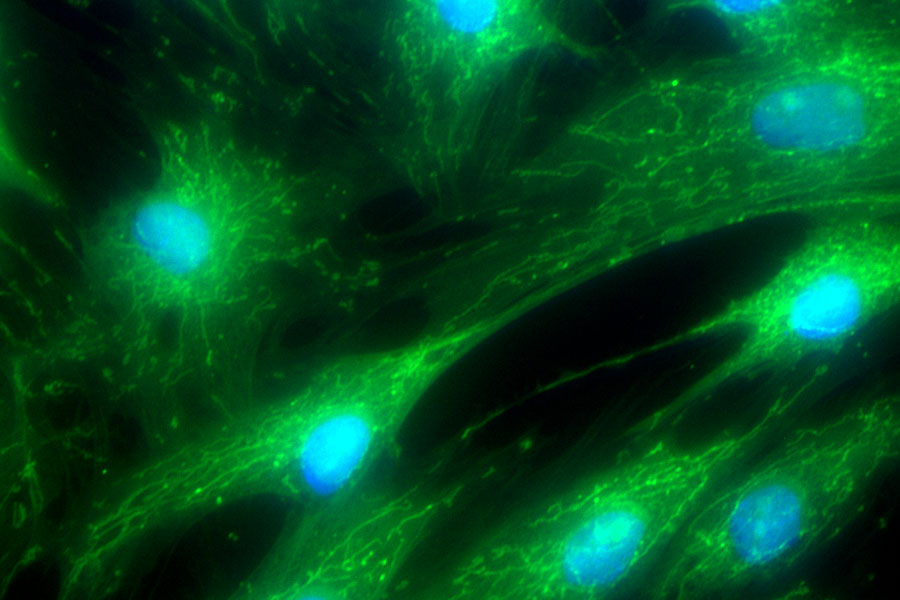
Kathleen DeCicco-Skinner
Chair
Broadly speaking our laboratory studies molecular changes that contribute to cancer development as well as the role of the tumor microenvironment in the initiation and progression of cancer. We have two active areas of research in our laboratory. (1) The first area of research investigates one specific signaling pathway defect and how it predisposes to squamous cell carcinoma, a form of skin cancer. The tumor progression locus 2 (Tpl2) gene is involved in a variety of cellular functions including inflammatory processes and immune function. We have recently identified a novel tumor suppressor role of Tpl2 in chemically-induced skin cancer. Tpl2-/-mice have higher incidences of cutaneous papillomas than wildtype mice and these papillomas convert to cutaneous squamous cell carcinoma more readily than in wildtype mice. Currently, we are working to understand the stromal-epithelial interactions that drive skin cancer development and progression in Tpl2-/- mice. (2) Multiple myeloma is the second most common blood cancer in the United States. Epidemiological studies have identified obesity as a risk factor for multiple myeloma. Obesity increases both the risk of developing multiple myeloma and decreases overall patient survival. However, the molecular underpinnings by which adipocytes (fat cells) contribute to multiple myeloma growth and progression is relatively unknown. Our laboratory is working to understand the hormonal, lipid, and signaling factor dysregulation in obese adipocytes that contribute to MM growth and progression.

Daniel Fong
My research is focused on the evolution, ecology, and conservation of subterranean organisms, especially groundwater-dwelling amphipod and isopod crustaceans. The amphipod Gammarus minus is an especially useful model organism because subterranean and surface populations with different morphologies exist, allowing for comparative studies. Current ongoing projects include:
- Long-term monitoring of population dynamics of the amphipod Stygobromus tenuis potamacus and the isopod Caecidotea kenki from seepage springs using mark-recapture methods
- Interactions of size-selective predation by fish and sexual selection on the body size of the amphipod Gammarus minus, and the cascading effect of body size variation among populations on macroinvertebrate community structure in karst springs
- Molecular phylogeography and genetic adaptations to the subterranean environment, in collaboration with David Carlini
- Mechanisms of evolutionary loss of body pigmentation in subterranean organisms.
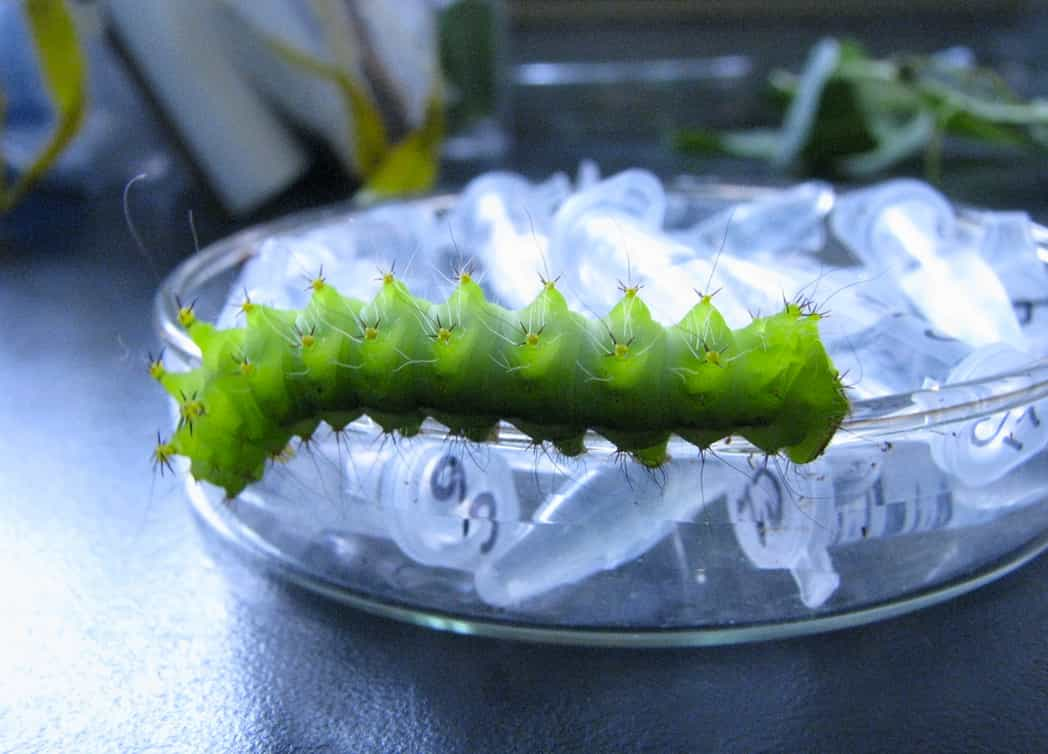
Rebecca Hazen
I am an evolutionary biologist and an urban ecologist. Much of my research has examined interactions among plants and antagonists as an avenue for identifying mechanisms responsible for evolutionary radiations, community assembly, and the maintenance of diversity in changing landscapes. I combine molecular and ecological assessments to examine population dynamics of plant-insect interactions across landscapes that change over space and time. The goal of this work is to inform our theoretical understanding of evolutionary processes shaping trophic relationships and to identify patterns that influence applied conservation of habitats threatened by anthropogenic forces.
Another arm of my research examines the interface between ecology and humans to understand the mechanisms that shape socio-ecological disparities and resilience in urban landscapes. I work on a collaborative project to study relationships between vegetation structure and zoonotic disease vectors relative to historical geography, socioeconomic factors, politics, and infrastructure in post-Katrina New Orleans.
You can read more about my research, teaching, and outreach at RebeccaHazen.weebly.com.

Taisuke Izumi
My research is centered on the mechanisms of persistent viral infections in humans and the subsequent development of therapeutic interventions. HIV, a lentivirus leading to AIDS, has impacted 39 million people globally in 2022. Although antiretroviral therapy has advanced, complete eradication remains elusive due to persistent viral reservoirs within host immune cells. Another area of focus is the coronavirus, SARS-CoV-2, with 768 million confirmed cases and approximately 7 million fatalities reported by 2023. Particularly noteworthy is the persistence of long COVID symptoms in 11% of cases in the USA post-recovery. Additionally, my work explores the implications of EBV, a herpesvirus, which chronically infects approximately 95% of the global population. Recent studies have identified a potential association between EBV and Multiple Sclerosis (MS), an autoimmune disease affecting the central nervous system. My ultimate research objective is to contribute to the scientific knowledge that will pave the way for effective therapeutic interventions, improve patient outcomes, and fortify the global response to these formidable health challenges.
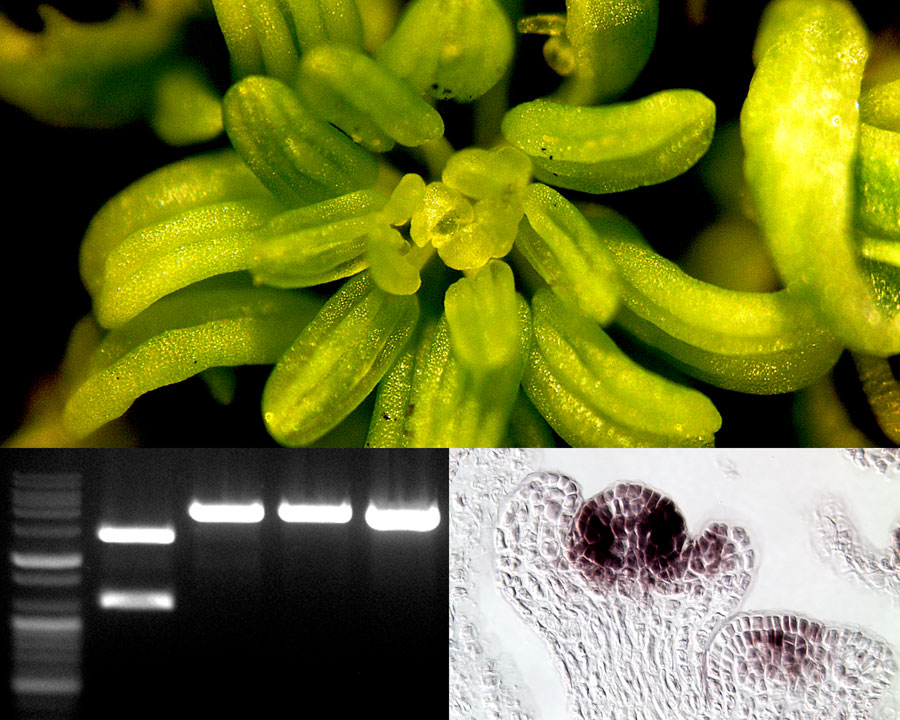
Naden Krogan
Stem cells are crucial for the growth and development of multicellular organisms. We are interested in how stem cell activity is regulated by gene expression. Our work focuses on transcription factors that control the proper spatial and temporal expression of genes in stem cells. Without this regulation, stem cell activity is dysfunctional and organisms develop abnormally. Our investigations use the plant model Arabidopsis thaliana since its stem cells continuously generate new organs, such as leaves or flowers, throughout its lifecycle. We employ molecular, genetic and genomic approaches to understand how transcriptional regulation maintains stem cell integrity and to offer strategies for improving crop productivity.
Our research projects are driven by motivated undergraduate and graduate students. Students interested in learning more are encouraged to contact Dr. Krogan (nkrogan@american.edu).
Current Research Projects:
- Mechanisms Controlling Cellular Differentiation and Proliferation:
We aim to determine how gene regulation maintains stem cell function in Arabidopsis. Molecular and biochemical strategies are being used to identify protein complexes that repress differentiation-promoting genes in stem cells. We are also studying how stem cell activity arrests at the end of the lifecycle. Here, we are using genomics approaches to investigate global changes in gene expression across different stages of development. - Mapping and Functional Characterization of Genomic Regions:
Modern crop species exhibit desirable traits due to centuries of artificial selection. DNA variation in non-coding regions of plant genomes has driven this process of crop domestication. Using high-throughput genomics approaches, we are analyzing how transcription factor binding at these non-coding regions controls gene expression and influences plant growth and development.

Catherine Schaeff
Dr. Schaeff's training is in behavior and evolutionary biology. Her research interests include social behavior, conservation biology, molecular ecology and most recently, human sexual identity - examining the biological foundations of human gender and sexual orientation.
There is data that suggests that individuals with gender dysphoria (i.e., transgendered individuals) who receive sex hormones as part of their transition may experience a shift in their sexual orientation and/or gender identities. To social scientists, gender is primarily a social construct, connected to an individual's sex or sexual orientation mostly through socially constructed links. To natural scientists, it is a flexible behavioral aspect that evolved because it facilitated obtaining high quality mates and maximizing one's reproductive success. Investigating whether, and if so how, sex hormones affect sexual identity (gender and sexual orientation) is important both for enhancing our understanding of sexual identity and because it will provide information and insights for transitioning individuals and the practitioners who support them. This work incorporates biological, psychological, and sociological theories and methodologies.
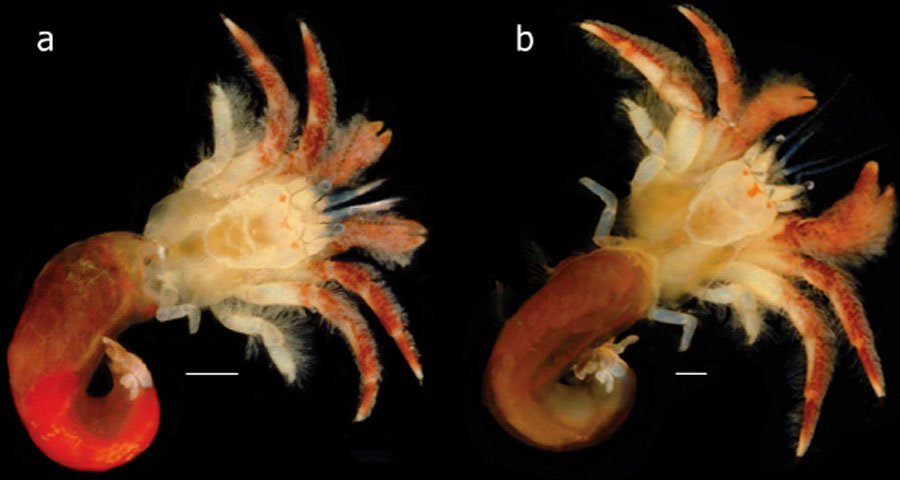
Christopher Tudge
Dr. Tudge is a reproductive biologist with particular interests in the reproductive biology of invertebrates. His research focuses on the reproductive cells and associated structures, evolutionary mechanisms, and reproductive behaviors of marine decapod crustaceans (shrimps, crabs, crayfish and lobsters). He also has experience dealing with other invertebrate and vertebrate groups and his knowledge of reproduction in crustaceans can be directly applied to other taxa. He uses this interest in crustacean reproduction to investigate the evolutionary history (phylogeny) of particular crabs in the marine environment and his work has direct application to aquaculture of commercial species and conservation of marine and freshwater crustaceans. Dr Tudge is also a keen local natural historian and bird biologist and teaches classes on ornithology, marine biology and marine mammals.
Selected Publications
-
Parsifal F Islas-Morales, Anny Cárdenas, María J Mosqueira, Luis Felipe Jiménez-García, Christian R Voolstra. Ultrastructural and proteomic evidence for the presence of a putative nucleolus in an Archaeon. Frontiers in Microbiology; 14 (2023).
-
Anny Cárdenas, Jean-Baptiste Raina, Claudia Pogoreutz, Nils Rädecker, Jeremy Bougoure, Paul Guagliardo, Mathieu Pernice & Christian R. Voolstra. Greater functional diversity and redundancy of coral endolithic microbiomes align with lower coral bleaching susceptibility. ISME Journal 16 (2022).
-
Tan, M.M.J., Tudge, C.C., Penna-Diaz, M.A. and Thiel,M. (2020). Chapter 3. Fertilization success in crustaceans from the male perspective: Sperm ultrastructure and sperm economy. In: R. Cothran & M. Thiel (eds), The Natural History of the Crustacea, Vol. 6. Reproductive Biology.
- Sepahvand, V., Momtazi, F. and Tudge, C.C. (2020). A new species of ghost shrimp of the genus Michaelcallianassa Sakai, 2002 (Crustacea: Decapoda: Axiidea: Callichiridae) from subtidal waters of the Persian Gulf, Iran. Zootaxa 4810(2): 383-388 (DOI: 10.11646/zootaxa.4810.2.12).
- Fong, DW, Orndorff W, Carlini DB. Submitted (2020). Species status evaluation of Lirceus usdagalan, L. culveri, and L. hargeri populations (Isopoda; Asellidae) based on a large scale next-generation sequence data set.
-
Connaughton VP, M Crowley-Perry,** A Murk**, T Davidson, and CJ Rowe. 2020. Using zebrafish to investigate hyperglycemia-induced molecular and behavioral changes to visual circuit. Poster session presented at the Association for Research in Vision and Ophthalmology Conference. Baltimore MD.
-
Crowley-Perry, M**, ER Winston**, AJ Barberio**, RC Bernardo**, and VP Connaughton. 2020. Transient developmental exposure to bisphenol-A alters zebrafish optomotor response. Poster session presented at the Association for Research in Vision and Ophthalmology Conference. Baltimore MD.
-
Ng, M**, K DeCicco-Skinner, and VP Connaughton. 2020. Using zebrafish to assess the effect of chronic, early developmental exposure to environmentally relevant concentrations of 5-fluorocuracil and leucovorin. Environmental Toxicology and Pharmacology. DOI: 10.1016/j.etap.2020.103356
-
Wilken, RL**, I. Aikerim, S**. MacAvoy and VP Connaughton. 2020. Anatomical and behavioral assessment of larval zebrafish (danio rerio) reared in anacostia river water samples. Archives of Environmental Contamination and Toxicology. DOI: 10.1007/s00244-020-00707-0
- Ballard A**, Bieniek S**, Carlini DB. 2019. The fitness consequences of synonymous mutations in Escherichia coli: Experimental evidence for a pleiotropic effect of translational selection. Gene 694: 111-120.
-
Nicole F. Bonan, David Kowalski, Kaitie Kudlac, Kira Flaherty, J. Curtis Gwilliam, Lauren G. Falkenberg, Erik Maradiaga, Kathleen L. DeCicco-Skinner. (2019) Inhibition of HGF/MET signaling decreases overall tumor burden and blocks malignant conversion in Tpl2-related skin cancer. Oncogenesis. 8(1),1-12.
-
Weinman, L.M., Running, K.L.D., Carey, N.S., Stevenson, E.J., Swaney, D.L., Chow, B.Y., Krogan, N.J. and N.T. Krogan (2019) TCO, a putative transcriptional regulator in Arabidopsis, is a target of the protein kinase CK2. International Journal of Molecular Sciences 20, 99.
-
Weinman, L.M., Running, K.L.D., Carey, N.S., Stevenson, E.J., Swaney, D.L., Chow, B.Y., Krogan, N.J. and N.T. Krogan (2019) TCO, a putative transcriptional regulator in Arabidopsis, is a target of the protein kinase CK2. International Journal of Molecular Sciences 20, 99.
Gorham, S.R., Weiner, A.I., Yamadi, M. and N.T. Krogan (2018) HISTONE DEACETYLASE 19 and the flowering time gene FD maintain reproductive meristem identity in an age-dependent manner. Journal of Experimental Botany 69, 4757-4771.
-
Tanvir, Z, Nelson, RF, DeCicco-Skinner, K, Connaughton, VP. (2018) One month of hyperglycemia alters spectral responses of the zebrafish photopic ERG. Disease Models & Mechanisms. 11, dmm035220.
-
Fong, D.W. 2019. Food Sources. In: pp. 429-434, D.C. Culver and W.B. White (eds.), Encyclopedia of Caves, 3nd Edition. Elsevier Academic Press, Burlington, Massachusetts. https://doi.org/10.1016/B978-0-12-814124-3.00051-0
-
Fong, D.W. 2019. Gammarus minus as a model system for the study of evolution. In: pp. 451-458, D.C. Culver and W.B. White (eds.), Encyclopedia of Caves, 3nd Edition. Elsevier Academic Press, Burlington, Massachusetts. https://doi.org/10.1016/B978-0-12-814124-3.00054-6
-
Bullwinkle, EM, Parker, MD, Bonan, NF, Falkenberg, LG, Davison, SP, DeCicco-Skinner, KL. (2016) Adipocytes contribute to the growth and progression of multiple myeloma: Unraveling obesity related differences in adipocyte signaling. Cancer Letters. 380(1), 114-121.
-
Davis, CM, DeCicco-Skinner, KL, Hienz, RD. (2015) Deficits in Sustained Attention and Changes in Dopaminergic Protein Levels Following Exposure to Proton Radiation are related to Basal Dopaminergic Function. PLoS One. 10(12):e0144556.
-
Wetzell, BB**, Muller, MM**, Flax, SM, King, HE, DeCicco-Skinner, KL, Riley, AL. (2015) Effect of Preexposure on Methylphenidate-Induced Taste Avoidance and Related BDNF/TrkB Activity in the Rat. Psychopharmacology. 232, 2837-2847.
-
Davis CM, DeCicco-Skinner KL, Roma PG, and Hienz RD. (2014) Changes in Neurobehavioral Performance and Dopaminergic Function Associated with Exposure to Space Radiation. Radiation Research. 181, 258-271.
-
Wetzell, BB**, Muller, MM**, Cobuzzi, JL**, Hurwitz, ZE**, DeCicco-Skinner, KL, Riley, AL. (2014). Effect of age on methylphenidate-induced conditioned taste avoidance and related BDNF/TrkB signaling in the insular cortex of the rat. Psychopharmacology. 231(8):1493-501.
- DeCicco-Skinner KL, Henry GH**, Cataisson C, Tabib T**, Gwilliam JC**, Watson N**, Bullwinkle, EM**, Falkenberg, L**, O'Neill R**, Moran, A, Wiest JS. (2014) Endothelial cell tube formation assay for the study of in vitro angiogenesis. J. Vis. Exp. (91), e51312.
-
Gould, CJ, Saldanha CJ & Connaughton VP. (2019). Acute exposure to 4-OH-A, not PCB1254, alters brain aromatase activity but does not adversely affect growth in zebrafish. Environmental Toxicology & Pharmacology.
-
Meier, A**, R. Nelson, and VP Connaughton. 2018. Color processing in zebrafish retina. Frontiers in Cellular Neuroscience. 12: 327. DOI: 10.3389/fncel.2018.00327
- Tanvir, Z**, R. Nelson, K DeCicco-Skinner, and VP Connaughton. 2018. One month of hyperglycemia alters spectral responses of the zebrafish photopic electroretinogram. Disease Models and Mechanisms. 11: dmm035220. DOI: 10.1242/dmm.035220
- Østbye K, Østbye E, Lien AM, Lee LR**, Lauritzen SE, Carlini DB. 2018.Morphology and life history in cave and surface populations of Gammarus lacustris. PLoS ONE 13: e0205556.
- Gould, CJ**, J Wiegand**, and VP Connaughton. 2017. Acute developmental exposure to 4-hydroxyandrostenedione has a long-term effect on visually-guided behaviors. Neurotoxicology and Teratology. 64: 45-49. DOI: 10.1016/j.ntt.2017.10.003
-
Gould, CJ, J Wiegand, and VP Connaughton. 2017. Acute developmental exposure to 4-hydroxyandrostenedione has a long-term effect on visually-guided behaviors. Neurotoxicology and Teratology. 64: 45-49.
-
Clayman, CL, E. Malloy, D. Kearns, and VP Connaughton. 2017. Differential Behavioral Effects of Ethanol Pre-Exposure in Male and Female Zebrafish (Danio rerio). Behavioral Brain Research. 335: 174-184.
-
Bentley M., and Connaughton V.P. 2017. A simple way for students to visualize cellular respiration: Adapting the board game MousetrapTM to model complexity. CourseSource. DOI: 10.24918/cs.2017.8
-
Carvan MJ III, Kalluvila TA, Klingler RH, Larson JK, Pickens M, Mora-Zamorano FX, Connaughton VP, Sadler-Riggleman I, Beck D, Skinner MK. 2017. Mercury-induced epigenetic transgenerational inheritance of abnormal neurobehavior is correlated with sperm epimutations in zebrafish. PloS One. 12:e0116155. DOI: 10.731/journal.pone.0176155
-
LeFauve, M** and VP Connaughton. 2017. Developmental exposure to heavy metals alters visually-guided behaviors in zebrafish. Current Zoology. 63(2): 221-227. DOI: 10.1093/cz/zox017
-
Torvund, MM, TS Ma, VP Connaughton, F Ono, and RF Nelson. 2016. Cone signals in the monostratified and bistratified amacrine cells of adult zebrafish retina. Journal of Comparative Neurology. 525: 1532-1557. DOI: 10.1002/cne.24107
-
Biederman MK, Nelson MM, Asalone KC, Pedersen AL, Saldanha CJ, Bracht JR. (2018). Discovery of the first germline-restricted gene by substractive transcriptomic analysis in the zebra finch, Taeniopygia guttata. Current Biology, 28(10):1620-1627
-
Tarboush, R**, G Chapman, VP Connaughton. 2016. Abnormal rearing light levels delay retinal development and alter photoreceptor synaptic ultrastructure in larval zebrafish. European Journal of Anatomy. 20: 159-169.
-
Connaughton, VP, C Baker**, L Fonde**, E Gerardi**, C Slack**. 2016. Alternate immersion in an external glucose solution differentially affects blood sugar values in older vs. younger zebrafish adults. Zebrafish. 13: 87-94. DOI: 10.1089/zeb.2015.1155
-
Connaughton, VP, BB Wetzell, LS Arneson, V Delucia, and A Riley. 2015. Elevated dopamine concentration in light-adapted zebrafish retinas is correlated with increased dopamine synthesis and metabolism. Journal of Neurochemistry. 135: 101-108. DOI: 0.1111/jnc.13264
-
Reider, M** and VP Connaughton. 2015. Developmental exposure to methimazole increases anxiety behavior in zebrafish. Behavioral Neuroscience. 129: 634-642. DOI: 10.1037/bne0000087
-
Pelli, M** and VP Connaughton. 2015. Chronic exposure to environmentally-relevant concentrations of fluoxetine (Prozac) decreases survival, increases abnormal behaviors, and delays predator escape responses in guppies (Poecilia reticulata). Chemosphere. 139: 202-209. DOI: 10.1016/j.chemosphere.2015.06.033
-
Reider, M**, VP Connaughton. 2014. Effects of thyroid inhibition and rearing temperature on zebrafish development. Birth Defects Research part B: Developmental and Reproductive Toxicology. 101: 347-354. DOI: 10.1002/bdrb.21118
-
Culver, D.C., and D.W. Fong. 2018. Terrestrial Fauna of the Greenbrier Karst. In, W.B. White (ed.), pp. 371-383, Chapter 17, Caves and Karst of the Greenbrier Valley, West Virginia. Caves and Karst Systems of the World. Springer International Publishing. https://doi.org/10.1007/978-3-319-65801-8
-
Fong, D.W., and D.C. Culver. 2018. The Subterranean Aquatic Fauna of the Greenbrier Karst. In, W.B. White (ed.), pp. 385-397, Caves and Karst of the Greenbrier Valley, West Virginia. Caves and Karst Systems of the World. Springer International Publishing. https://doi.org/10.1007/978-3-319-65801-8
Niemiller, M.L., M.L. Porter, J. Keany, H. Gilbert, D.W. Fong, D.C. Culver, C. Hobson, K.D. Kendall, M.A. Davis, and S.J. Taylor. 2017. Evaluation of eDNA for groundwater invertebrate detection and monitoring: a case study with endangered Stygobromus (Amphipoda: Crangonyctidae). Conservation Genetics Resources. https://doi.org/10.1007/s12686-017-0785-2
-
Carlini, D.B.*, S. Satish, and D.W. Fong. 2013. Parallel reduction in expression, but no loss of functional constraint, in two opsin paralogs within cave populations of Gammarus minus (Crustacea: Amphipoda). BMC Evolutionary Biology 13:89. https://doi.org/10.1186/1471-2148-13-89
-
MacAvoy, S.E., A. Braciszewski, E. Tengi, and D.W. Fong*. 2016. Trophic plasticity among spring versus cave populations of Gammarus minus: examining functional niches using stable isotopes and C/N ratios. Ecological Research 31:589-595. https://doi.org/10.1007/s11284-016-1359-6
-
Niemiller, M.L.*, M.L. Porter, J. Keany, H. Gilbert, D.W. Fong, D.C. Culver, C. Hobson, K.D. Kendall, M.A. Davis, and S.J. Taylor. 2017. Evaluation of eDNA for groundwater invertebrate detection and monitoring: a case study with endangered Stygobromus (Amphipoda: Crangonyctidae). Conservation Genetics Resources. https://doi.org/10.1007/s12686-017-0785-2
-
Carlini, D.B.*, and D.W. Fong. 2017. The transcriptomes of cave and surface populations of Gammarus minus (Crustacea: Amphipoda) provide evidence for positive selection on cave downregulated transcripts. PLoS ONE 12(10): e0186173. https://doi.org/10.1371/journal.pone.0186173
-
Bilandžija, H, M. Laslo, M.L. Porter, and D.W. Fong*. 2017. Melanization in response to wounding is ancestral in arthropods and conserved in albino cave species. Scientific Reports 7:17148. https://www.nature.com/articles/s41598-017-17471-2
-
Gowin, J, Kothmann, W.W. (2016). The Human Brain: Student's Self-Test Coloring Book. Hauppauge, NY. Barron's Educational Series.
-
Kothmann, W.W., Trexler, E.B., Whitaker, C.M., Li, W., Massey, S.C., O'Brien, J. (2012) Nonsynaptic NMDA receptors mediate activity-dependent plasticity of gap junctional coupling in the AII amacrine cell network. Journal of Neuroscience 32(20),6747-6759.
-
Paffhausen E*, Alowais Y*, Chao C, Callihan E, Creswell K, Bracht, JR. Discovery of a stem-like multipotent cell fate. American Journal of Stem Cells. In press.
-
Lindblad KA1, Bracht, JR1, Williams AE, Landweber LF. Thousands of RNA-cached copies of whole chromosomes are present in the ciliate Oxytricha during development. RNA. 2017 April 27.
-
Bracht JR1*, Wang X*, Shetty K, Chen X, Uttarotai G, Callihan E, McCloud S, Clay D, Wang J, Nowacki M, Landweber LF. Chromosome fusions triggered by noncoding RNA. RNA Biology. 2016 Jun 7:1-12.
-
Chen X*, Bracht JR1*, Goldman A, Swart E, Dolzhenko E, Swart E, Clay D, Perlman DH, Doak TG, Stuart A, Amemiya C, Landweber LF. The architecture of a scrambled genome reveals massive levels of genomic rearrangement during development. Cell. 2014 Aug 28:158(5):1187-98.
-
Carlini DB, Makowski M. 2015. Codon bias and gene ontology in holometabolous and hemimetabolous insects. Journal of Evolutionary Zoology Part B: Molecular and Developmental Evolution 324: 686-698.
-
Tudge, C. C., Lemaitre, R. and Schneider-Paolantonio, K. (2018). Studies of male sexual tubes in hermit crabs (Crustacea: Decapoda: Anomura: Paguroidea). III. Morphology of the sexual tube in Catapagurus sharreri A. Milne-Edwards, 1880 (Paguridae). Journal of Crustacean Biology, (doi:10.1093/jcbiol/rux124).
-
Assugeni, C. O., Magalhaes, T., Bolanos, J., Tudge, C. C., Mantelatto, F. L. and Zara, F. J. (2017). Ultrastructure of the spermatozoa of spider crabs, family Mithracidae (Crustacea, Decapoda, Brachyura): Integrative analysis based on morphological and molecular data. Journal of Morphology 278: 1628-1646 (DOI: 10.1002/jmor.20737).
-
Gorham, S.R., Weiner, A.I., Yamadi, M. and N.T. Krogan (2018) HISTONE DEACETYLASE 19 and the flowering time gene FD maintain reproductive meristem identity in an age-dependent manner. Journal of Experimental Botany 69, 4757-4771.
-
Carey, N.S. and N.T. Krogan (2017) The role of AUXIN RESPONSE FACTORs in the development and differential growth of inflorescence stems. Plant Signaling & Behavior 12, e1307492-1 – e1307492-6.
-
Guan, C., Wu, B., Yu, T., Wang, Q., Krogan, N.T., Liu, X., and Y. Jiao (2017) Spatial auxin signaling controls leaf flattening in Arabidopsis. Current Biology 27, 2940-2950.
-
Krogan, N.T., Marcos, D., Weiner, A.I. and T. Berleth (2016) The auxin response factor MONOPTEROS controls meristem function and organogenesis in both the shoot and root through the direct regulation of PIN genes. New Phytologist 212, 42-50.
-
Krogan, N.T. and T. Berleth (2015) The identification and characterization of specific ARF-Aux/IAA regulatory modules in plant growth and development. Plant Signaling & Behavior 10, e992748-1-e992748-4.
-
KAPLAN JB, Sampathkumar V, Bendaoud M, Giannakakis AK, Lally ET, Balashova NV. 2016. In vitro characterization of biofilms formed by Kingella kingae. Molecular Oral Microbiology doi: 10.1111/omi.12176 [Epub ahead of print].
-
Weiser J, Henke H, Hector N, Both A, Christner M, Büttner H, KAPLAN JB, Rohde H. 2016. Sub-inhibitory tigecycline concentrations induce extracellular matrix binding protein Embp dependent Staphylococcus epidermidis biofilm formation and immune evasion. International Journal of Medical Microbiology 306:471-478.
-
Mlynek KD, Callahan MT, Shimkevitch AV, Farmer JT, Endres JL, Marchand M, Bayles KW, Horswill AR, KAPLAN JB. 2016. Effects of low-dose amoxicillin on Staphylococcus aureus USA300 biofilms. Antimicrobial Agents and Chemotherapy 60:2639-2651.
-
Tudge, C.C. (2016). Amir Sagi, recipient of the Crustacean Society Excellence in Research Award. Journal of Crustacean Biology 36(6): 865-866.
-
Sepahvand, V., Momtazi, F. and Tudge C.C. (2015). Cheramus iranicus, a new species of ghost shrimp (Decapoda: Axiidea: Callianassidae) from the Persian Gulf, Iran. Zootaxa 4040(2): 215-224.
-
Tudge, C.C., Scheltinga, D.M., Jamieson, B.G.M., Guinot, D. and Richer de Forges, B. (2014). Comparative ultrastructure of the spermatozoa of the Majoidea (Crustacea, Decapoda, Brachyura) with new data on six species in five genera. Acta Zoologica 95(1): 1-20 (First published on-line Nov. 7, 2012, DOI: 10.1111/azo.12005).
-
Shanmugam M, Gopal P, ElAbbar F, Schreiner HC, KAPLAN JB, Fine DH, Ramasubbu N. 2015. Role of exopolysaccharide in Aggregatibacter actinomycetemcomitans-induced bone loss in a rat model for periodontal disease. PLoS ONE 10:e0117487.
-
Farmer JT, Shimkevitch AV, Reilly PS, Mlynek KD, Jensen KS, Callahan MT, Bushaw-Newton KL, KAPLAN JB. 2014. Environmental bacteria produce abundant and diverse antibiofilm compounds. Journal of Applied Microbiology 117:1663-1673.
-
Chabane YN, Marti S, Rihouey C, Alexandre S, Hardouin J, Lesouhaitier O, Vila J, KAPLAN JB, Jouenne T, Dé E. 2014. Characterisation of pellicles formed by Acinetobacter baumannii at the air-liquid interface. PLoS ONE 10:e111660.
-
Ng M, Epstein SB, Callahan MT, Piotrowski BO, Simon GL, Roberts AD, Keiser JF, KAPLAN JB. 2014. Induction of MRSA biofilm by low-dose β-lactam antibiotics: specificity, prevalence and dose-response effects. Dose-Response 12:152-161.
-
Walters-Conte, K. B., Johnson, D. L., Johnson, W. E., O'Brien, S. J., & Pecon-Slattery, J. (2014). The dynamic proliferation of CanSINEs mirrors the complex evolution of Feliforms. BMC Evolutionary Biology, 14, 137. http://doi.org/10.1186/1471-2148-14-137
-
Krogan, N.T., Yin, X., Ckurshumova, W. and T. Berleth (2014) Distinct subclades of Aux/IAA genes are direct targets of ARF5/MP transcriptional regulation. New Phytologist 204, 474-483.
-
Chow, B.Y., Sanchez, S.E., Breton, G., Pruneda-Paz, J.L., Krogan, N.T., and S.A. Kay (2014) Transcriptional regulation of LUX by CBF1 mediates cold input to the circadian clock in Arabidopsis. Current Biology 24, 1518-1524.
Notes: * denotes co-first author; ** denotes student author.
